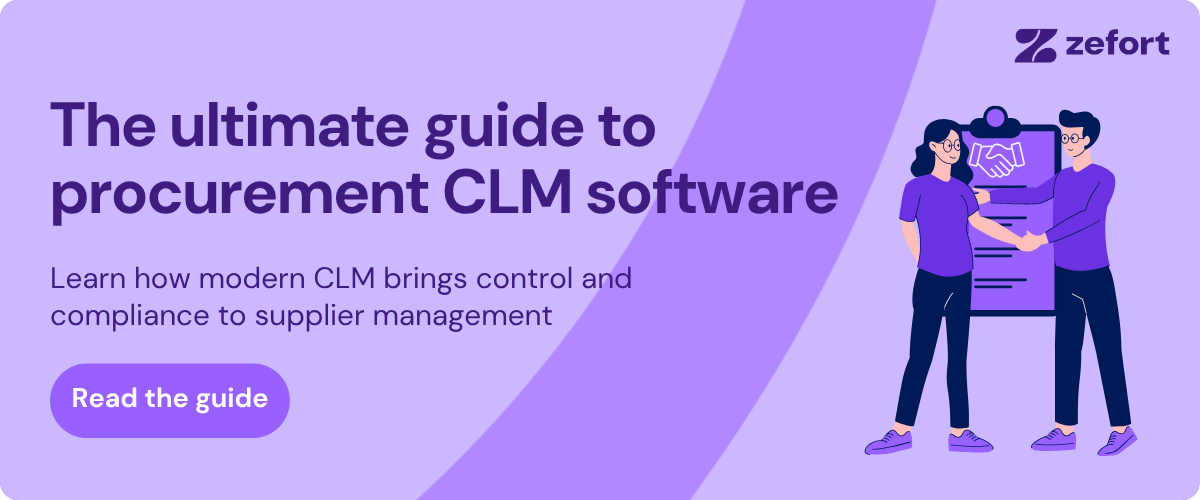Mastering contract negotiation in procurement: Tips and techniques for success
Negotiating supplier contracts is one of procurement’s most strategic responsibilities. Each negotiation defines value, risk, and long-term collaboration – yet too often, the process relies on intuition rather than data.
Modern procurement teams combine preparation, transparency and technology to ensure every negotiation delivers measurable results. Here’s how to bring structure and confidence to your next supplier negotiation.
Why negotiation skills matter in procurement
Every supplier relationship begins – and often succeeds or fails – at the negotiation table. Effective negotiation goes beyond price; it defines how both parties share responsibility, manage risk and adapt to change.
A well-negotiated contract can:
-
Deliver predictable savings through clear pricing and terms
-
Reduce operational and legal risk with precise clauses
-
Strengthen supplier partnerships based on fairness and performance
-
Support compliance frameworks like NIS2, ensuring suppliers meet security and data standards
In short, negotiation is not a one-time event – it’s the foundation for sustainable supplier management.
Preparing for a successful contract negotiation
Strong outcomes start long before the first meeting. Preparation ensures procurement enters each negotiation with facts, priorities and alignment across stakeholders.
1. Research market and supplier context
Analyze current pricing trends, alternative suppliers and supply chain dependencies. Benchmark against comparable deals to define your negotiation range. Modern contract management tools can centralize historical supplier data and performance records to inform your approach.
2. Identify internal stakeholders and objectives
Procurement represents multiple interests: operations, legal, finance and compliance. Define what each stakeholder values most – for example, delivery reliability, cost stability, or cybersecurity requirements – and prioritize accordingly.
3. Establish clear goals and trade-offs
Not every term carries equal weight. Define non-negotiable elements (such as data handling under NIS2) and flexible points (like payment schedules). This clarity prevents last-minute uncertainty and builds credibility with suppliers.
Negotiation techniques that drive better outcomes
Build trust, not tension
Long-term supplier success depends on collaboration. Start with transparency about business priorities and invite suppliers to share theirs. Trust creates room for creative, win-win solutions.
Use data as leverage
Procurement decisions backed by accurate data are harder to dispute. Benchmark pricing, compare service levels, and use contract metadata from your CLM system to demonstrate historical performance or risk levels.
Align negotiation with total value, not just cost
Price reductions lose meaning if quality or delivery suffers. Evaluate total cost of ownership, lifecycle value, and performance incentives that keep suppliers accountable throughout the contract period.
Bring compliance to the table
In the NIS2 era, negotiation must include data security, notification timelines and subcontractor management. Ensure these requirements are reflected clearly in contract clauses and measurable KPIs.
Using technology to support smarter negotiations
Modern contract lifecycle management (CLM) platforms provide real-time visibility into existing supplier contracts, historical terms, and renewal performance.
Procurement can leverage this data to:
-
Compare upcoming negotiations against previous deal terms
-
Access automated summaries of obligations and risk areas through AI features
-
Track negotiation decisions and approvals in a transparent audit trail
Zefort, for example, gives procurement teams a searchable repository of all supplier agreements, AI-assisted metadata, and automated reminders for reviews and renewals. Negotiation no longer depends on memory or manual spreadsheets – every fact is accessible when you need it.
After the negotiation: ensuring follow-through
A signed contract is not the finish line. Effective negotiation management continues throughout the contract lifecycle.
-
Document key decisions and rationale directly in your CLM system.
-
Assign ownership so renewal discussions happen before deadlines.
-
Monitor supplier performance against agreed SLAs and compliance criteria.
-
Capture lessons learned – which terms worked, which didn’t – to improve future negotiations.
This feedback loop turns every negotiation into a learning process that strengthens procurement maturity over time.
Key takeaways
-
Preparation, transparency and data are the core of successful procurement negotiation.
-
Use market intelligence and contract metadata to support your position.
-
Balance cost savings with compliance, supplier performance and NIS2 requirements.
-
A CLM system like Zefort enables structured, data-driven negotiation and consistent follow-up.
➡️ Read next
For a deeper look into how automation, AI and visibility support better supplier management, read The ultimate guide to procurement contract management software.





